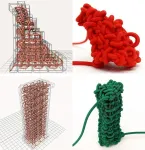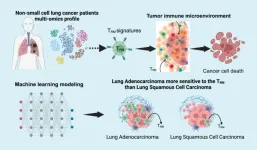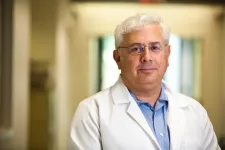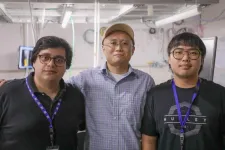(Press-News.org) DURHAM, N.C. – Though exceedingly rare, some people diagnosed with amyotrophic lateral sclerosis (ALS) partially or fully recover from the lethal neurodegenerative disease.
A better understanding of this baffling phenomenon, reported in medical literature for at least 60 years, could point to potential new treatment approaches. To that end, researchers at Duke Health and St. Jude’s Research Hospital launched a study of ALS recovery patients and found certain genetic factors that appear to protect against the disease’s typical assault on motor neurons.
The findings appear in the journal Neurology, the medical journal of the American Academy of Neurology.
“With other neurological diseases, there are now effective treatments,” said Richard Bedlack, M.D., Ph.D., the Stewart, Hughes, and Wendt Professor in the Department of Neurology at Duke University School of Medicine. “But we still don’t have great options for these patients, and we desperately need to find things. This work provides a starting point to explore how biological reversals of ALS occur and how we might be able to harness that effect therapeutically.”
Bedlack and colleagues – including co-lead author Jesse Crayle, M.D., who is now at Washington University in St. Louis – conducted a genome-wide association study of 22 participants who had been diagnosed with ALS and recovered, comparing them to similar patients whose ALS progressed. Researchers at St. Jude Children’s Research Hospital led the genetic analysis.
“Our whole genome sequencing pipeline leveraged a multiomics strategy to combine newly available gene expression and epigenetic data, and maximized not just this unique dataset but the CReATe and TargetALS patient databases,” explained co-lead author Evadnie Rampersaud, Ph.D., St. Jude Children’s Research Hospital Center for Applied Bioinformatics. She stated that the finding was made possible because the patient samples were characterized so well.
The team identified a common genetic variation called a single nucleotide polymorphism (SNP). The SNP reduces levels of a protein that blocks the IGF-1 signaling pathway, and study participants with this one-letter change in their DNA were 12 times more likely to have experienced a recovery than those without it.
IGF-1 is a growth factor that has long been a target of interest in ALS research because of its role in protecting the motor neurons. ALS patients with fast progression of disease have lower levels of IGF-1 protein, but clinical trials aimed at raising their IGF-1 levels have had disappointing results.
The current finding provides a potential new approach to targeting IGF-1.
“This suggests that the IGF-1 pathway should be further studied as a potential target for future ALS treatments,” Crayle said. “While it may not be effective to simply give people IGF-1, our study indicates we might have a way to go about it differently by reducing the levels of this inhibiting protein. It is also possible that the prior studies with IGF-1 were just not adequately dosed or need to be dosed in a different way.”
Bedlack said the research team is now exploring whether there is a correlation between the blocking protein and disease progression in a much larger number of patients. Results of that analysis will inform whether a clinical trial targeting this protein could be launched.
In addition to Bedlack and Crayle, study authors include Jason Myers, Joanne Wuu, J. Paul Taylor, Gang Wu and Michael Benatar.
The study received funding support from the Duke ALS Patient Gift Fund, ALSAC – the fundraising and awareness organization of St. Jude Children’s Research Hospital; the ALS Association (grants 17-LGCA-331 and 16-TACL-242); the CReATe Consortium (U54NS092091), which is part of the NIH Rare Diseases Clinical Research Network (RDCRN; and the National Cancer Institute (P30 CA021765).
###
END
Yuichi Hirose has a dream — a dream that someday everyone will have access to a machine capable of knitting furniture.
This machine wouldn't just knit the furniture's exterior fabric, but would use knitting to fashion solid three-dimensional chairs, tables and other objects. Tired of that love seat? Just unravel it and reuse the yarn to knit yourself an ottoman.
This new fabrication technique — first envisioned by Hirose, a robotics Ph.D. student in Carnegie Mellon University's School of Computer Science — is called solid knitting. The idea captured his imagination more than a decade ago. And now, working with a research team headed by James ...
Researchers from Tilburg University, Northwestern University, and Lehigh University published a new Journal of Marketing study that examines how a seller’s enjoyment in making a product influences buyers’ willingness to pay and the price the seller charges.
The study, forthcoming in the Journal of Marketing, is titled “Production Enjoyment Asymmetrically Impacts Buyers’ Willingness to Pay and Sellers’ Willingness to Charge” and is authored ...
(LOS ANGELES, July 30, 2024) – An extensive analytical study performed at the Terasaki Institute and published in Frontiers in Immunology highlights the crucial role of tissue-resident memory T cells and how they influence the immune environment of patients with non-small cell lung cancer and their overall prognosis.
Non-small cell lung cancer accounts for ~85% of lung tumors and is a leading cause of death in adults. Tissue-resident memory T cells, a specialized subset of immune cells residing in peripheral tissues, have been ...
Neurologists diagnose cognitive impairment with a clinical exam of memory and thinking skills. To determine whether Alzheimer’s disease is the cause of the cognitive impairment, evidence of the specific brain changes that characterize Alzheimer’s must be obtained, typically via a brain scan or spinal tap. Identifying people whose cognitive symptoms are due to Alzheimer’s disease is critical now that new Alzheimer’s therapies are available that could change the course of the illness.
To make diagnosis more convenient for patients, many companies have begun selling Alzheimer’s ...
Ze’ev Ronai, PhD, is stepping down as director of the National Cancer Institute-designated cancer center at Sanford Burnham Prebys, effective August 1. Cosimo Commisso, PhD, deputy director of the cancer center, will serve as interim head while a national search is conducted for a new cancer center director.
Ronai is moving to Cedars-Sinai Medical Center in Los Angeles where he will focus on translational research.
“During my 20 years at Sanford Burnham Prebys, I’ve had the honor of developing new research directions, institutionally, as well as in my lab,” said Ronai.
“As the director of the cancer ...
In traditional Japanese basket-weaving, the ancient “Kagome” design seen in many handcrafted creations is characterized by a symmetrical pattern of interlaced triangles with shared corners. In quantum physics, the Kagome name has been borrowed by scientists to describe a class of materials with an atomic structure closely resembling this distinctive lattice pattern.
Since the latest family of Kagome metals was discovered in 2019, physicists have been working to better understand their properties and potential applications. A new study led by Florida State University Assistant Professor of ...
NEW ORLEANS – The Ochsner-Xavier Institute for Health Equity and Research, or OXIHER, has published its first strategic plan, outlining strategic priorities and achievements since the institute began in 2020.
The strategic plan is available here.
A partnership between Ochsner Health and Xavier University of Louisiana, OXIHER examines health disparities at the community level while educating healthcare providers on creating and nurturing a culture of equity, and training more students for advanced careers in healthcare.
The new plan details OXIHER’s substantial progress in its first three years in addressing ...
The U.S. Department of Energy’s (DOE) Argonne National Laboratory has been awarded funding from DOE’s Office of Technology Transitions for four new projects that will help with commercialization of innovative clean-energy technology for a sustainable future.
Argonne scientists will work to turn their innovative ideas into next-generation technology necessary to build cleaner, more resilient energy systems. These projects build on Argonne’s decades-long role at the forefront of the quest to decarbonize ...
Researchers from North Carolina State University and the Massachusetts Institute of Technology have designed a protocol for harnessing the power of quantum sensors. The protocol could give sensor designers the ability to fine-tune quantum systems to sense signals of interest, creating sensors that are vastly more sensitive than traditional sensors.
“Quantum sensing shows promise for more powerful sensing capability that can approach the fundamental limit set by the law of quantum mechanics, but the challenge lies in being able to direct ...
Thanks to an accidental discovery, researchers at the University of British Columbia have created a new super-black material that absorbs almost all light, opening potential applications in fine jewelry, solar cells and precision optical devices.
Professor Philip Evans and PhD student Kenny Cheng were experimenting with high-energy plasma to make wood more water-repellent. However, when they applied the technique to the cut ends of wood cells, the surfaces turned extremely black.
Measurements by Texas A&M University’s ...





